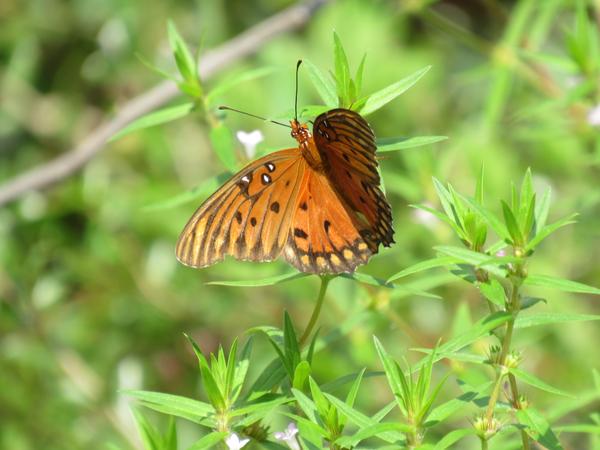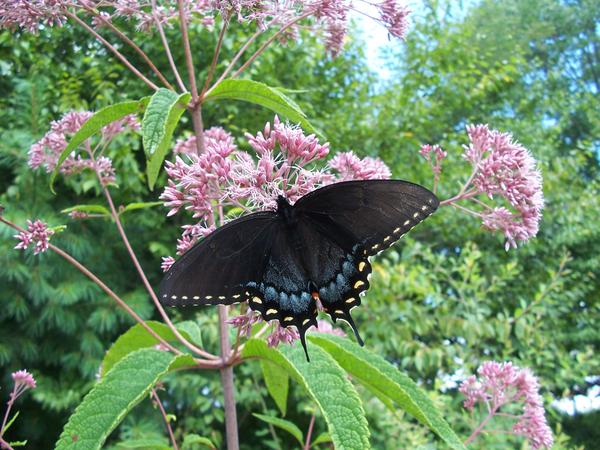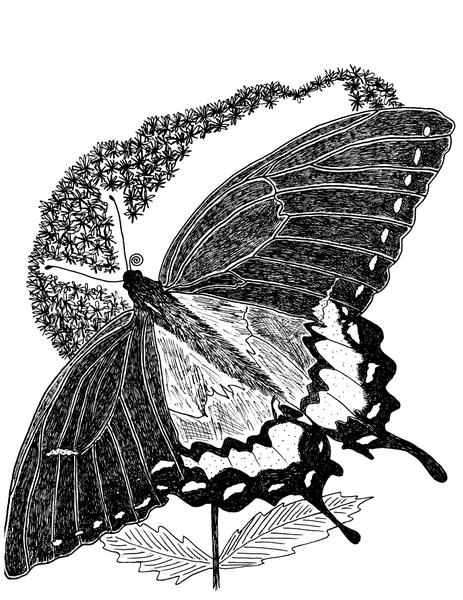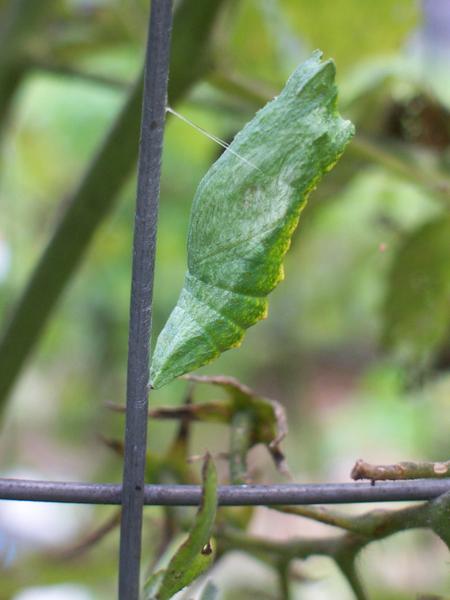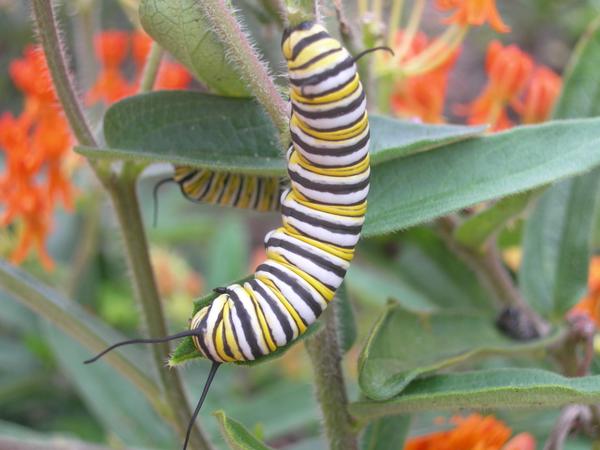Backyards and other small areas may have a limited value when managing for larger species like deer, but they are extremely valuable for many other species. With planning and a little work, these areas can easily be managed to benefit nectar-seekers such as hummingbirds and butterflies.
By promoting native plant species beneficial to hummingbirds and butterflies, you can ensure food and cover are available to attract these colorful critters. Whether you devote a large area of your property to wildlife gardening, or just a small patch, you can provide essential caterpillar host plants and nectar sources to attract butterflies and hummingbirds.
Getting Started
It is important to have a soil test done on potential garden sites before beginning to plant. Soil tests are available through the NC Department of Agriculture & Consumer Services Soil Testing Lab. Soil test information and interpretive material is available from your Cooperative Extension center. Extension agents can recommend soil amendments and plants adapted to your area.
After a site for habitat establishment is chosen, sketch out a garden plan. The plan should show the arrangement of nectar and host plants, the location of water sources, basking areas, and if needed, artificial feeder sites. Hummingbirds and butterflies are attracted to sunny areas. Improve shaded garden sites by reducing the extent of canopy trees.
It is best to begin planting your hummingbird / butterfly garden in the fall, to ensure successful establishment of plants. Concentrate on setting out native trees, shrubs, vines, and perennials that will not have to be replaced each year. Consider planting a variety of plants with staggered bloom times to provide nectar throughout the growing season.
Plant the tallest trees and shrubs at the back borders and then work to the front of the property using sequentially shorter plant layers.
Hummingbird Tips
- Use a 4:1 mixture of water and white granulated sugar in hummingbird feeders. Dissolve sugar completely by stirring in hot tap water. Allow the solution to cool before using and store the unused portion in the refrigerator. [Note: Do not use honey, brown sugar, fruit juice, or red dye solutions in feeders as they tend to spoil easily and may harm the hummingbirds].
- Avoid using insect sprays, repellents, or pesticides on or around hummingbird feeders. Apply petroleum jelly on the wire from which the feeder hangs to discourage stinging insects or ants attracted to the sugar solution.
- Hummingbirds are attracted to red objects, so feeders typically have red nectar ports. If not, apply red tape to feeder openings instead of using potentially harmful red food coloring in the sugar solution.
- Station feeders near blossoms where hummingbirds already feed.
- Clean feeders at least once each week with a hot water and vinegar solution instead of soap.
- Plant gardens in protected spots next to a fence or building to minimize the effects of the wind.
- Include trees and shrubs in your landscape. Hummingbirds use the branches for perching and nesting.
Butterfly Tips
- Furnish basking stones or boards for butterflies to perch on when sunning.
- Provide caterpillar food sources in both sunny and shaded areas (see suggested “Larval host plant” list below)
- Allow small, unused areas to grow up with the vegetation (“weeds”) necessary for healthy butterfly caterpillars.
- Provide damp areas; because butterflies cannot drink from open water sources, moist sand, earth, or mud provide the best watering holes.
- Avoid using pesticides. Butterflies and their caterpillars are insects and will be harmed or killed by insecticides.
Plantings for Hummingbirds
Hummingbirds are attracted not only to sunny areas, but to red objects, so select plants with red or other brightly colored flowers when possible. Native plants can "fill the bill" where nectar-seekers are concerned and should be used whenever possible. The plants listed below will successfully attract hummingbirds.
| Trees | |
|
Red buckeye |
Hawthorn |
|
Yellow buckeye |
Yellow-poplar |
|
Shrubs |
|
|
Buttonbush |
Mountain laurel |
|
Rhododendron |
Sweet pepperbush |
|
Wild azalea |
|
|
Vines |
|
|
Crossvine |
Coral honeysuckle |
|
Carolina jessamine |
Trumpet vine |
|
Flowers |
|
|
Beebalm |
Blue lobelia |
|
Blue phlox |
Cardinal flower |
|
Columbine |
Crested iris |
|
Fire pink |
Horsemint |
|
Jewelweed |
Rose mallow |
|
Smooth beardtongue |
Sundrops |
|
Wild bergamot |
Yellow thistle |
Plantings for Butterflies
Provide the habitat components necessary for each of the four stages of the butterfly life-cycle to ensure greater use by butterflies and a complete habitat; include host plants on which to lay eggs, standing vegetation for caterpillar chrysalises, caterpillar food host plants, and nectar-producing flowers for adults. The following table lists a sampling of some native plants that are beneficial to butterflies and their larval caterpillars. For more detailed information on managing butterflies in your backyard, see https://content.ces.ncsu.edu/butterflies-in-your-backyard.
|
|
|
Nectar Source |
Larval Host Plant |
|
Trees |
Black cherry |
|
X |
|
|
Elms |
|
X |
|
|
Hickories |
|
X |
|
|
Oaks |
|
X |
|
|
Pawpaw |
|
X |
|
|
Yellow-poplar |
|
X |
|
Shrubs |
Blueberry |
|
X |
|
|
Buttonbush |
X |
|
|
|
Dwarf huckleberry |
X |
X |
|
|
New Jersey tea |
X |
X |
|
|
Spicebush |
|
X |
|
|
Sweet pepperbush |
X |
|
|
|
Wild azalea |
X |
|
|
Vines |
Dutchman’s pipe |
|
X |
|
|
Passionflower |
X |
X |
|
Flowers |
Beebalm |
X |
|
|
|
Blue false indigo |
X |
X |
|
|
Blue phlox |
X |
|
|
|
Butterfly weed |
X |
X |
|
|
Columbine |
X |
|
|
|
Coreopsis |
X |
|
|
|
Goat’s beard |
|
X |
|
|
Hairy beardtongue |
|
X |
|
|
Hemp dogbane |
X |
|
|
|
Joe-pye weed |
X |
X |
|
|
New England aster |
X |
X |
|
|
Purple coneflower |
X |
|
|
|
Swamp milkweed |
X |
X |
|
|
White snakeroot |
X |
|
|
|
White wood aster |
X |
X |
|
|
Wild geranium |
X |
|
|
|
Yellow thistle |
X |
X |
|
|
Yellow wild indigo |
X |
X |

Larval host plants are essential. Here is a zebra swallowtail caterpillar on a pawpaw.
Liessa Bowen CC BY-NC 4.0
Working With Wildlife Series
North Carolina State University Extension - Forestry
Working With Wildlife Series
Publication date: July 1, 2019
Reviewed/Revised: May 28, 2024
N.C. Cooperative Extension prohibits discrimination and harassment regardless of age, color, disability, family and marital status, gender identity, national origin, political beliefs, race, religion, sex (including pregnancy), sexual orientation and veteran status.
N.C. Cooperative Extension prohibits discrimination and harassment regardless of age, color, disability, family and marital status, gender identity, national origin, political beliefs, race, religion, sex (including pregnancy), sexual orientation and veteran status.

